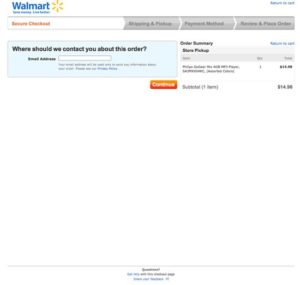
Vikash Kumar, digital manager, Tatvasoft.com
Let’s consider the online buying process. Imagine you’re a customer, choose a product and hit the Buy button—everything happens in a flash. Pretty simple, isn’t it! Now what if you come across something that might compel you to give up on your purchase, situations like:
- Unnecessary registration
- Long and tedious checkout
- No discount options
- Lack of payment options
- Technical issues and glitches such as slow loading time, network downtime, broken links and page errors
And the list goes on. However, if you really want to grow your ecommerce business you must avoid such silly mistakes and stay up-to-date on trends that will impact the industry. I would like to shed light on some of the most significant errors that make cart abandonment happen and offer suggestions on how to avoid these errors.
#1 Unintuitive or difficult site navigation
Can you tell me what is the most crucial element in the world of ecommerce? It’s how you are creating seamless navigation for your end users. In simple words, it’s more about not letting any glitch or any hiccup come on the way of your customer completing a purchase. Examples include 404 pages and slow page load times, problems that lead potential customers to click to one of your competitors.

Image source: NeilPatel
So what needs to be done?
This occurs because many online store owners fall into the trap of thinking everything is okay. Never do that! Instead, try asking ten people to test your site at different times. Ask your professionals to collect the feedback and make sure you keep an open mind for constructive criticism. (That’s an essential element). Remember that an ecommerce store should be the picture of what the customer needs and not something that you as an owner believes to be the best for consumers.
#2 Tiresome checkout experience
Many online shoppers reach the checkout page, only to find an extensive and time-consuming form? Imagine after all the time you took to select your desired items, you come across a checkout page that offers poor experience, leading shoppers to abandon the cart.
So what needs to be done?
Require only information required to complete a purchase and make the rest optional. The more unnecessary data you request, the greater the chance of the customer entering the cart abandonment list. Try simplifying your forms and deploying intuitive fill-in steps.
Also offer customers the option of logging in with the help of Facebook, Twitter or Instagram. Or you can partner with a payment processor such as Google Pay to make checkout easier.

An example of a good checkout page.
#3 Lack of a mobile strategy
Most consumer have smartphones and many shoppers use their phones to navigate through your online store and add products to the cart. Gone are the days when purchases were made using a desktop.
Multi-device solutions have become the norm for e-commerce businesses. Not considering the same might ruin their experience and make them give up the purchase.
So, what to do?
As soon as your customer opens the site on the computer, make sure you have all their previous actions saved in a cache. This is the only way through which they can see that all the items especially the one selected through the mobile are still stored in their shopping cart. This will definitely make the buying process much more fluid for them.
#4 Inaccurate delivery information
Two other factors that strongly influence cart abandonment are the price of freight and delivery time. Are you one of those ecommerce stores that only inform shipping costs and the estimation of delivery times at the last possible minute, if so, you got a lot to lose.
If you do that, you’re allowing your customer to go through the whole process from selecting products to completing the purchase, only to surprise them with high shipping costs or long delays before they receive their product.
How to get around this situation?
This scenario definitely creates a frustrating experience for your end users. In order to avoid such a mistake, make all the information available for them right from the start. Have you ever come across freight costing tools featuring visitor’s ZIP code or country? Adding such features on each product page, as well as delivery times can be worth the risk.
#5 Limited payment options
Choosing the best payment gateway or processor is a complicated job. But think about the consumer. The more limited the payment options are, the greater are the chances of a customer abandoning the shopping cart.
That’s especially true when you sell internationally, because each nation has its own payment habits. And what is the outcome? Again frustrated expectation, dissatisfied customer and the end result- an abandoned cart.
What to do?
Partner with payment gateways or processors that offer multiple payment options and that can integrate easily with your ecommerce store.
Final Thought
A successful ecommerce business always works to ensure that their customers’ needs are being met. Follow these suggestions and I am sure you will have more peace of mind—and positive results.
Tatvasoft is a custom software development outsourcing firm.
Favorite